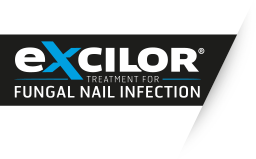How to treat nail fungus?
There are 3 critical success factors in the effective treatment of nail fungus:
1. Active principle (mode of action)4
Typically topical solutions split into antimycotics and acidification products. Antimycotics kill the dermatophytes whereas acidification products create an unfavorable environment for fungal growth. Anti-mycotic activity is not the success defining factor however; conventional acids under low pH conditions (<pH 4 inhibits growth) show an MIC of 0,1% – which is considered powerful enough to combat nail fungus. It is scientifically proven that dermatophytes exposed to a low pH (<4) are inhibited in their growth. In both cases the damaged nail needs to grow out.
2. Penetration
A product needs to penetrate the nail and reach all layers inside and underneath the nail. Many products have difficulty to penetrate the hard keratine surface and layered structure of the nail, because of the large size of traditional antimycotic molecules. These products typically require filing of the nail surface to help the product penetrate deep into the nail.
3. Compliance
Whatever product is used, results of successful nail fungus treatment become visible with the re-growth of healthy nail. Sufferers need to be patient. Any treatment can only be successful if the patient adhere to the prescribed treatment regimen. Research shows that the more a treatment fits within the normal daily routine of the patient (so no complex/time consuming application procedures) the more compliant they will be and hence the more to efficacious the treatment will be. Less is more…
4: This effective mode of action was presented at the 2011 EADV (European Academy of Dermatology and Venerology conference in Lisbon – Honraet et Al. 2011. Acidification as an approach to control dermatophytes. 20TH EADV Congress Lisbon, Portugal, 20-24 October 2011.

